Note: If an image ever fails to appear - refresh your page, it really is there
Flags of the United States of America
Military and Naval Flags of the United States of America
Flags of United States Joint Commands
The U.S. Armed Forces has or has had several Joint Service Commands, or Unified Combatant Command units. A Unified Combatant Command (UCC) is composed of forces from two or more services, usually has a broad or continuing mission, and is organized either on a geographical basis (Area Of Responsibility) or with a specific responsibility. These joint commands are commanded by either a four star general or admiral.
USLANTCOM Flag
|
United States Atlantic Command 1947-1999
The US Atlantic Command became the United States Joint Forces Command (USJFCOM) in 1999.
The Atlantic Command flag had the USACOM seal on a blue field
|
USREDCOM Flag
|
United States Readiness Command 1972-1987
|
USSTRICOM Flag
|
United States Strike Command 1961-1972
|
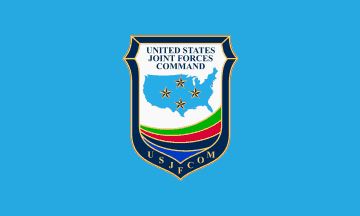
USJFCOM Flag
|
United States Joint Forces Command 1980-2010
The Joint Special Operations Command (JSOC) is a component command of the United States Special Operations Command (USSOCOM) and is charged to study special operations requirements and techniques to ensure interoperability and equipment standardization, plan and conduct special operations exercises and training, and develop Joint Special Operations Tactics. It was established in 1980. It is located at Pope Army Air Field and Fort Bragg in North Carolina, USA.
Officially JSOC is a joint-service "sub-unified command." A component command is service-specific, such as "Army Forces USSOCOM" or "Air Forces USCENTCOM." JSOC publically-identified mission and its actual mission are two entirely different things. In reality it performs the most highly classified and difficult special operations missions, such as the recent job in Pakistan.
|
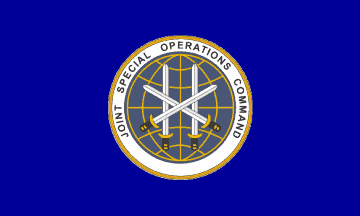
USSOCOM Flag
|
United States Special Operations Command
The United States Special Operations Command (USSOCOM) is the Unified Combatant Command charged with overseeing the various Special Operations Commands (SOC or SOCOM) of the Army, Air Force, Navy and Marine Corps of the United States Armed Forces. The command is part of the Department of Defense.
USSOCOM is headquartered at MacDill Air Force Base in Tampa, Florida.
|

USSOCOM Flag
|
United States Special Operations Command 1992
United States Strategic Command (USSTRATCOM) is one of the ten Unified Combatant Commands of the United States Department of Defense (DoD). The Command, including components, employs more than 2,700 people, representing all four services, including DoD civilians and contractors, who oversee the command´s operationally focused global strategic mission. Strategic Command was established in 1992 as a successor to Strategic Air Command (SAC). In October 2002, USSTRATCOM merged with the United States Space Command (USSPACECOM).
It is charged with space operations (such as military satellites), information operations (such as information warfare), missile defense, global command and control, intelligence, surveillance, and reconnaissance, global strike and strategic deterrence (the United States nuclear arsenal), and combating weapons of mass destruction.
USSTRATCOM is headquartered at Offutt Air Force Base south of Omaha, Nebraska.
|
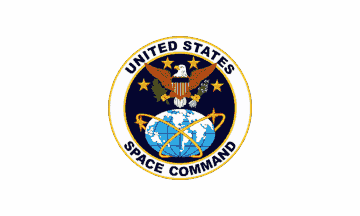
USSPACECOM Flag
|
United States Space Command 1985-2002
The United States Space Command (USSPACECOM) was a Unified Combatant Command of the United States Department of Defense, created in 1985 to help institutionalize the use of outer space by the United States Armed Forces. The Commander in Chief of U.S. Space Command, with headquarters at Peterson Air Force Base, Colorado was also the Commander in Chief of the binational U.S.-Canadian North American Aerospace Defense Command (NORAD), and for the majority of time during USSPACECOM's existence also the Commander of the U.S. Air Force major command Air Force Space Command.
In 2002, it was merged with USSTRATCOM.
|
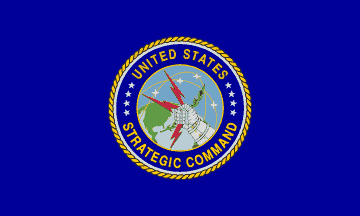
USSTRATCOM Flag
|
United States Strategic Command 2002-
United States Strategic Command (USSTRATCOM) is one of the ten Unified Combatant Commands of the United States Department of Defense (DoD). The Command, including components, employs more than 2,700 people, representing all four services, including DoD civilians and contractors, who oversee the commands operationally focused global strategic mission. Strategic Command was established in 1992 as a successor to Strategic Air Command (SAC). It is charged with space operations (such as military satellites), information operations (such as information warfare), missile defense, global command and control, intelligence, surveillance, and reconnaissance, global strike and strategic deterrence (the United States nuclear arsenal), and combating weapons of mass destruction.
The USSTRATCOM is headquartered at the Offutt Air Force Base in Omaha, Nebraska.
|
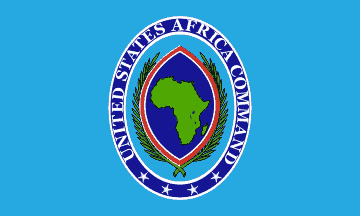
USAFRICOM Flag
|
United States Africa Command
The United States Africa Command (USAFRICOM or AFRICOM) is one of ten Unified Combatant Commands of the United States Armed Forces, headquartered at Kelley Barracks, Stuttgart, Germany. It is responsible for U.S. military operations and military relations with 53 African nations - an area of responsibility covering all of Africa except Egypt.
Regional command HQ: Kelley Barracks, in
Stuttgart, Germany
|
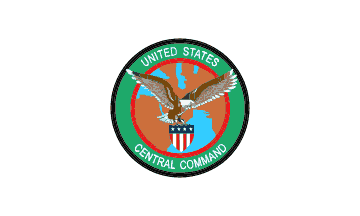
USCENTCOM Flag
|
United States Central Command
The United States Central Command (USCENTCOM) is a theater-level Unified Combatant Command unit of the U.S. armed forces, established in 1983 under the operational control of the U.S. Secretary of Defense. Its area of responsibility includes countries in the Middle East, North Africa, and Central Asia, most notably Afghanistan and Iraq.
Regional Command HQ: MacDill AFB, in Tampa, FL
|
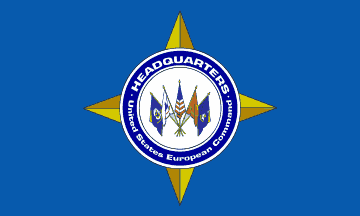
USEUCOM Flag
|
United States European Command
The United States European Command (EUCOM) is headquartered in Stuttgart, Germany. Its area of focus covers 51 countries and territories, including Europe, Russia, Iceland, Greenland, and Israel. The Commander of EUCOM simultaneously serves as the Supreme Allied Commander, Europe (SACEUR) within NATO.
Regional command HQ: Patch Barracks, in
Stuttgart, Germany
|
USPACOM Flag
|
United States Pacific Command 1947-
Regional command HQ: Camp H. M. Smith, in Honolulu, H
Pacific Command (PACOM) est., flag: PACOM seal on blue flag
|
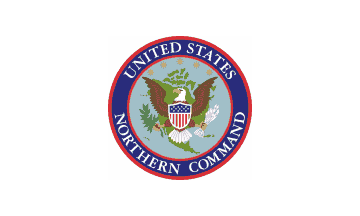
USNORTHCOM Flag
|
United States Northern Command 2002-
United States Northern Command (USNORTHCOM, or informally just NORTHCOM) is a Unified Combatant Command of the United States military. Created on October 1, 2002 in the aftermath of the September 11, 2001 attacks, its mission is to protect the United States homeland and support local, state, and federal authorities. The support that USNORTHCOM provides to civil authorities is limited by the Posse Comitatus Act which limits the role of the U.S. military in civil law enforcement.
USNORTHCOM´s Area of Responsibility (AOR) includes air, land and sea approaches and encompasses the contiguous United States, Alaska, Canada, Mexico and the surrounding water out to approximately 500 nautical miles (930 km). It also includes the Gulf of Mexico, the Straits of Florida, portions of the Caribbean region to include The Bahamas, Puerto Rico, and the U.S. Virgin Islands. Regional Command HQ: Peterson AFB, in
Colorado Springs, CO
|
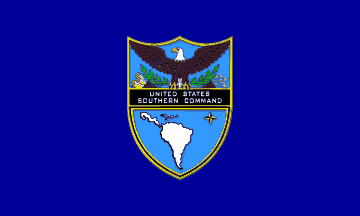
USSOUTHCOM Flag
|
United States Southern Command
The United States Southern Command (USSOUTHCOM), located in Miami, Florida, is one of ten Unified Combatant Commands (COCOMs) in the United States Department of Defense. It is responsible for providing contingency planning and operations in Central and South America, the Caribbean (except U.S. commonwealths, territories, and possessions), Cuba, their territorial waters, and for the force of U.S. military resources at these locations. USSOUTHCOM is also responsible for ensuring the militarization of the Panama Canal and canal area.
|
USTRANSCOM Flag
|
United States Transportation Command 1987
HQ: Scott AFB, in
St. Clair County, IL
|
Special Military Award Flags and Pennants of the United States
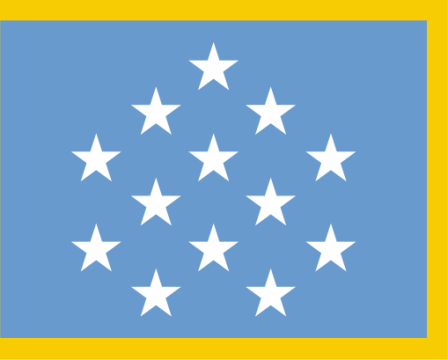
Medal of Honor Flag
(with fringe)
|
Medal of Honor Flag 2002
In 2002, President George W. Bush and Congress authorized a Medal of Honor flag to be presented to recipients of the decoration. The flag design was suggested by retired Army Special Forces First Sergeant Bill Kendall of Jefferson, Iowa. Kendall's design of a light blue field emblazoned with 13 white five-pointed stars was the basis of the flag suggested by Sarah LeClerc of the Institute of Heraldry. LeClerc's design, ultimately accepted as the official flag, does not include the words "Medal of Honor" as did Kendall's original design, and is fringed in gold. The color of the field and the 13 white stars, arranged in the form of a three bar chevron, consisting of two chevrons of five stars and one chevron of three stars, replicates the suspension ribbon of the Medal of Honor.
The first Medal of Honor recipient to receive the Medal of Honor flag was Sergeant First Class Paul R. Smith. The Medal of Honor with the flag was presented by President George W. Bush to his family during a ceremony at the White House on April 4, 2005. A special Medal of Honor Flag presentation ceremony was held for over 60 living Medal of Honor recipients on board the USS Constitution on September 30, 2006.
|
|